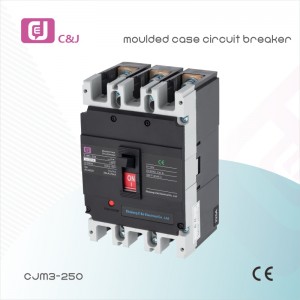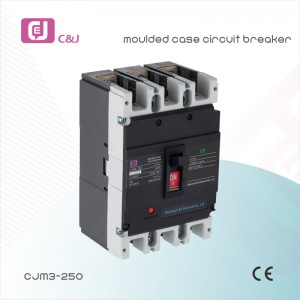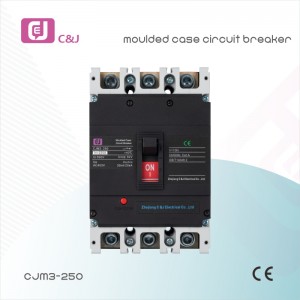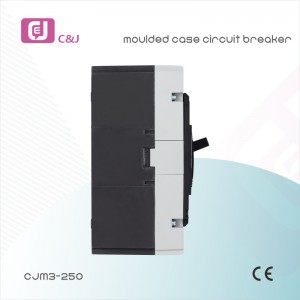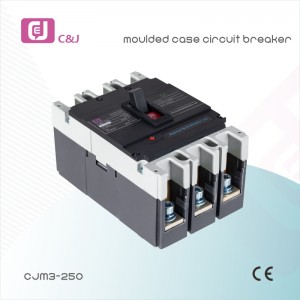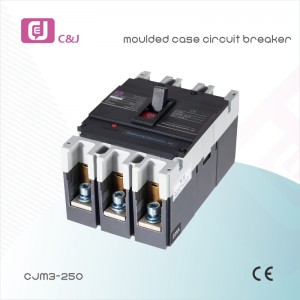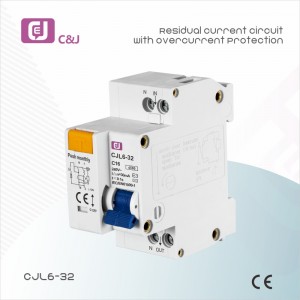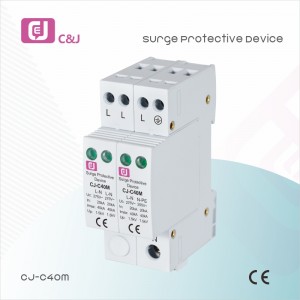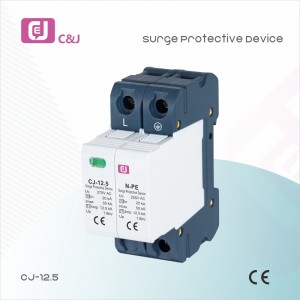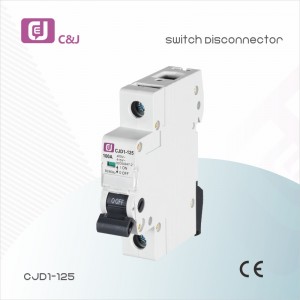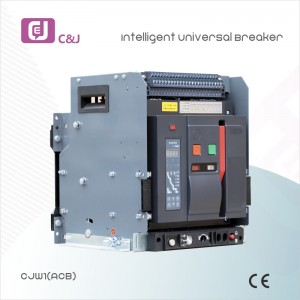China Manufacturer CJM3-250 225A 35kA/25kA MCCB Moulded Case Circuit Breaker
Product Model
CJ:Enterprise code
M:Moulded case circuit breaker
1:Design No
□:Rated current of frame
□:Breaking capacity characteristic code/S denotes standard type (S can be omitted)H denotes higher type
Note: There are four types of neutral pole (N pole) for four phases product.The neutral pole of type A is not equipped with over-current tripping element, its always switched on, and it is not switched on or off together with other three poles.
The neutral pole of type B is not equipped with over-current tripping element, and it’s switched on or off together with other three poles(the neutral pole is switched on before being switched off)The neutral pole of type C is equipped with over-current tripping element, and it’s switched on or off together with other three poles(the neutral pole is switched on before being switched off) The neutral pole of type D is equipped with over-current tripping element, it’s always switched on and is not switched on or off together with other three poles.
Table 1
| Accessory name | Electronic release | Compound release | ||||||
| Auxiliary contact,under voltage release,alam contact | 287 | 378 | ||||||
| Two auxiliary contact sets,alarm contact | 268 | 368 | ||||||
| Shunt release, alarm contact, auxiliary contact | 238 | 348 | ||||||
| Under voltage release,alarm contact | 248 | 338 | ||||||
| Auxiliary contact alarm contact | 228 | 328 | ||||||
| Shunt release alarm contact | 218 | 318 | ||||||
| Auxiliary contact under-voltage release | 270 | 370 | ||||||
| Two auxiliary contact sets | 260 | 360 | ||||||
| Shunt release under-voltage release | 250 | 350 | ||||||
| Shunt release auxiliary contact | 240 | 340 | ||||||
| Under-voltage release | 230 | 330 | ||||||
| Auxiliary contact | 220 | 320 | ||||||
| Shunt release | 210 | 310 | ||||||
| Alarm contact | 208 | 308 | ||||||
| No accessory | 200 | 300 | ||||||
Classification
- By breaking capacity: a standard type(type S) b higher breaking capacity type(type H)
- By connection mode: a front board connection, b back board connection, c plugin type
- By operation mode: a direct handle operation, b rotation handle operation,c electrical operation
- By number of poles: 1P, 2P, 3P, 4P
- By accessory: alarm contact, auxiliary contact, shunt release, under voltage release
Normal Service Condition
- The altitude of the installation site shall not exceed 2000m
- Ambient air temperature
- The ambient air temperature shall not exceed +40℃
- The average value shall not exceed +35℃ with in 24 hours
- The ambient air temperature shall not be less than -5℃
- Atmosphere condition:
- 1There lative humidity of atmosp here shall not exceed 50% at highest temperature of +40℃,and it can be higher atalower temperature,when theaver agelowest temperature in the wettest month doesn’t exceed 25℃ can be 90%,conden sationon product surfacedue to temperature change must be takenin to account.
- The pollution level is class 3
Main Technical Parameter
| 1 Rated value of circuit breakers | ||||||||
| Model | Imax (A) | Specifications (A) | Rated Operation Voltage(V) | Rated Insulation Voltage(V) | Icu (kA) | Ics (kA) | Number of Poles (P) | Arcing Distance (mm) |
| CJMM1-63S | 63 | 6,10,16,20 25,32,40, 50,63 |
400 | 500 | 10* | 5* | 3 | ≤50 |
| CJMM1-63H | 63 | 400 | 500 | 15* | 10* | 3,4 | ||
| CJMM1-100S | 100 | 16,20,25,32 40,50,63, 80,100 |
690 | 800 | 35/10 | 22/5 | 3 | ≤50 |
| CJMM1-100H | 100 | 400 | 800 | 50 | 35 | 2,3,4 | ||
| CJMM1-225S | 225 | 100,125, 160,180, 200,225 |
690 | 800 | 35/10 | 25/5 | 3 | ≤50 |
| CJMM1-225H | 225 | 400 | 800 | 50 | 35 | 2,3,4 | ||
| CJMM1-400S | 400 | 225,250, 315,350, 400 |
690 | 800 | 50/15 | 35/8 | 3,4 | ≤100 |
| CJMM1-400H | 400 | 400 | 800 | 65 | 35 | 3 | ||
| CJMM1-630S | 630 | 400,500, 630 |
690 | 800 | 50/15 | 35/8 | 3,4 | ≤100 |
| CJMM1-630H | 630 | 400 | 800 | 65 | 45 | 3 | ||
| Note: When the test parameters for the 400V, 6A without heating release | ||||||||
| 2 Inverse time breaking operation characteristic when each pole of overcurrent release for power distribution is powered on at the same time | ||||||||
| Item of test Current (I/In) | Test time area | Initial state | ||||||
| Non-tripping current 1.05In | 2h(n>63A),1h(n<63A) | Cold state | ||||||
| Tripping current 1.3In | 2h(n>63A),1h(n<63A) | Proceed immediately after No.1 test |
||||||
| 3 Inverse time breaking operation characteristic when each pole of over- current release for motor protection is powered on at the same time. |
||||||||
| Setting Current Conventional time Initial State | Note | |||||||
| 1.0In | >2h | Cold State | ||||||
| 1.2In | ≤2h | Proceeded immediately after the No.1 test | ||||||
| 1.5In | ≤4min | Cold State | 10≤In≤225 | |||||
| ≤8min | Cold State | 225≤In≤630 | ||||||
| 7.2In | 4s≤T≤10s | Cold State | 10≤In≤225 | |||||
| 6s≤T≤20s | Cold State | 225≤In≤630 | ||||||
| 4 The instantaneous operation characteristic of circuit breaker for power distribution shall be set as 10in+20%, and the one of circuit breaker for motor protection shall be set as12ln±20% |
Outline Installation Size
CJMM1-63, 100, 225, Outline and Installation Sizes (Front board connection)
| Sizes(mm) | Model Code | |||||||
| CJMM1-63S | CJMM1-63H | CJMM1-63S | CJMM1-100S | CJMM1-100H | CJMM1-225S | CJMM1-225 | ||
| Outline Sizes | C | 85.0 | 85.0 | 88.0 | 88.0 | 102.0 | 102.0 | |
| E | 50.0 | 50.0 | 51.0 | 51.0 | 60.0 | 52.0 | ||
| F | 23.0 | 23.0 | 23.0 | 22.5 | 25.0 | 23.5 | ||
| G | 14.0 | 14.0 | 17.5 | 17.5 | 17.0 | 17.0 | ||
| G1 | 6.5 | 6.5 | 6.5 | 6.5 | 11.5 | 11.5 | ||
| H | 73.0 | 81.0 | 68.0 | 86.0 | 88.0 | 103.0 | ||
| H1 | 90.0 | 98.5 | 86.0 | 104.0 | 110.0 | 127.0 | ||
| H2 | 18.5 | 27.0 | 24.0 | 24.0 | 24.0 | 24.0 | ||
| H3 | 4.0 | 4.5 | 4.0 | 4.0 | 4.0 | 4.0 | ||
| H4 | 7.0 | 7.0 | 7.0 | 7.0 | 5.0 | 5.0 | ||
| L | 135.0 | 135.0 | 150.0 | 150.0 | 165.0 | 165.0 | ||
| L1 | 170.0 | 173.0 | 225.0 | 225.0 | 360.0 | 360.0 | ||
| L2 | 117.0 | 117.0 | 136.0 | 136.0 | 144.0 | 144.0 | ||
| W | 78.0 | 78.0 | 91.0 | 91.0 | 106.0 | 106.0 | ||
| W1 | 25.0 | 25.0 | 30.0 | 30.0 | 35.0 | 35.0 | ||
| W2 | - | 100.0 | - | 120.0 | - | 142.0 | ||
| W3 | - | - | 65.0 | 65.0 | 75.0 | 75.0 | ||
| Install Sizes | A | 25.0 | 25.0 | 30.0 | 30.0 | 35.0 | 35.0 | |
| B | 117.0 | 117.0 | 128.0 | 128.0 | 125.0 | 125.0 | ||
| od | 3.5 | 3.5 | 4.5 | 4.5 | 5.5 | 5.5 | ||
CJMM1-400,630,800,Outline and Installation Sizes (Front board connection)
| Sizes(mm) | Model Code | |||||||
| CJMM1-400S | CJMM1-630S | |||||||
| Outline Sizes | C | 127 | 134 | |||||
| C1 | 173 | 184 | ||||||
| E | 89 | 89 | ||||||
| F | 65 | 65 | ||||||
| G | 26 | 29 | ||||||
| G1 | 13.5 | 14 | ||||||
| H | 107 | 111 | ||||||
| H1 | 150 | 162 | ||||||
| H2 | 39 | 44 | ||||||
| H3 | 6 | 6.5 | ||||||
| H4 | 5 | 7.5 | ||||||
| H5 | 4.5 | 4.5 | ||||||
| L | 257 | 271 | ||||||
| L1 | 465 | 475 | ||||||
| L2 | 225 | 234 | ||||||
| W | 150 | 183 | ||||||
| W1 | 48 | 58 | ||||||
| W2 | 198 | 240 | ||||||
| A | 44 | 58 | ||||||
| Install Sizes | A1 | 48 | 58 | |||||
| B | 194 | 200 | ||||||
| Od | 8 | 7 | ||||||
Back Board Connection Cut-out Diagram Plug In
| Sizes(mm) | Model Code | ||||||
| CJMM1-63S CJMM1-63H |
CJMM1-100S CJMM1-100H |
CJMM1-225S CJMM1-225H |
CJMM1-400S | CJMM1-400H | CJMM1-630S CJMM1-630H |
||
| Sizes Of Back Board Connection Plug in Type | A | 25 | 30 | 35 | 44 | 44 | 58 |
| od | 3.5 | 4.5*6 deep hole |
3.3 | 7 | 7 | 7 | |
| od1 | - | - | - | 12.5 | 12.5 | 16.5 | |
| od2 | 6 | 8 | 8 | 8.5 | 9 | 8.5 | |
| oD | 8 | 24 | 26 | 31 | 33 | 37 | |
| oD1 | 8 | 16 | 20 | 33 | 37 | 37 | |
| H6 | 44 | 68 | 66 | 60 | 65 | 65 | |
| H7 | 66 | 108 | 110 | 120 | 120 | 125 | |
| H8 | 28 | 51 | 51 | 61 | 60 | 60 | |
| H9 | 38 | 65.5 | 72 | - | 83.5 | 93 | |
| H10 | 44 | 78 | 91 | 99 | 106.5 | 112 | |
| H11 | 8.5 | 17.5 | 17.5 | 22 | 21 | 21 | |
| L2 | 117 | 136 | 144 | 225 | 225 | 234 | |
| L3 | 117 | 108 | 124 | 194 | 194 | 200 | |
| L4 | 97 | 95 | 9 | 165 | 163 | 165 | |
| L5 | 138 | 180 | 190 | 285 | 285 | 302 | |
| L6 | 80 | 95 | 110 | 145 | 155 | 185 | |
| M | M6 | M8 | M10 | - | - | - | |
| K | 50.2 | 60 | 70 | 60 | 60 | 100 | |
| J | 60.7 | 62 | 54 | 129 | 129 | 123 | |
| M1 | M5 | M8 | M8 | M10 | M10 | M12 | |
| W1 | 25 | 35 | 35 | 44 | 44 | 58 | |
What is MCCB?
Molded case circuit breakers are electrical protection devices that are designed to protect the electrical circuit from excessive current. This excessive current can be caused due to an overload or short circuit. The molded case circuit breakers can be used in a wide range of voltages and frequencies with a defined lower and upper limit of adjustable trip settings. In addition to tripping mechanisms, MCCBs can also be used as manual disconnection switches in case of emergency or maintenance operations. MCCBs are standardized and tested for overcurrent, voltage surge, and fault protection to ensure safe operation in all environments and applications. They work effectively as a reset switch for an electric circuit to disconnect power and minimize damage caused by a circuit overload, ground fault, short circuits, or when current exceeds the current limiting.
The Importance of Molded Case Circuit Breakers in Ensuring Electrical Safety
In today’s modern world, electricity is an important part of our daily lives. From powering our homes to running industrial machinery, ensuring the safety and reliability of electrical systems is critical. Molded case circuit breaker (MCCB) is a key component that plays an important role. In this blog, we will explore the importance of MCCBs in ensuring electrical safety.
MCCB is an electrical protection device designed to protect circuits and equipment from overloads and short circuits. They are commonly used in residential, commercial and industrial applications to prevent damage to electrical systems and, more importantly, reduce the risk of electrical fires.
One of the main functions of MCCB is to interrupt the current flow in case of overload or short circuit. This is critical to preventing wires and components from overheating, which can lead to fires and catastrophic damage. By tripping circuits and cutting off power, MCCBs help avoid potential hazards and protect people and property.
Additionally, MCCB provides a level of convenience and flexibility to electrical systems. They can be easily reset after a trip, allowing power to be quickly restored without the need to replace any components. This not only saves time and effort, it also minimizes downtime and disruption to daily operations.
In addition to their function of preventing electrical hazards, molded case circuit breakers help improve the overall efficiency and reliability of electrical systems. By protecting against overloads and short circuits, they help maintain the integrity of electrical equipment and extend its service life. This in turn reduces the need for costly repairs and replacements, saving time and money in the long run.
It’s worth noting that not all MCCBs are the same. When selecting an MCCB for a specific application, it is crucial to consider factors such as current rating, breaking capacity and operating voltage. These specifications should be carefully matched to the requirements of the electrical system to ensure proper protection and performance.
Additionally, regular maintenance and testing of the MCCB is critical to ensure its continued effectiveness. Regular inspections and tests can help identify any potential problems or wear and tear so repairs or replacements can be made as needed.
To sum up, molded case circuit breakers play a vital role in ensuring electrical safety and reliability. By protecting against overloads and short circuits, they help prevent electrical hazards and minimize the risk of fire. Additionally, they help increase the efficiency and longevity of electrical systems, making them an indispensable component in modern electrical installations. Investing in quality MCCB and ensuring it is properly maintained is vital to protecting people and property from the dangers of electrical faults.



